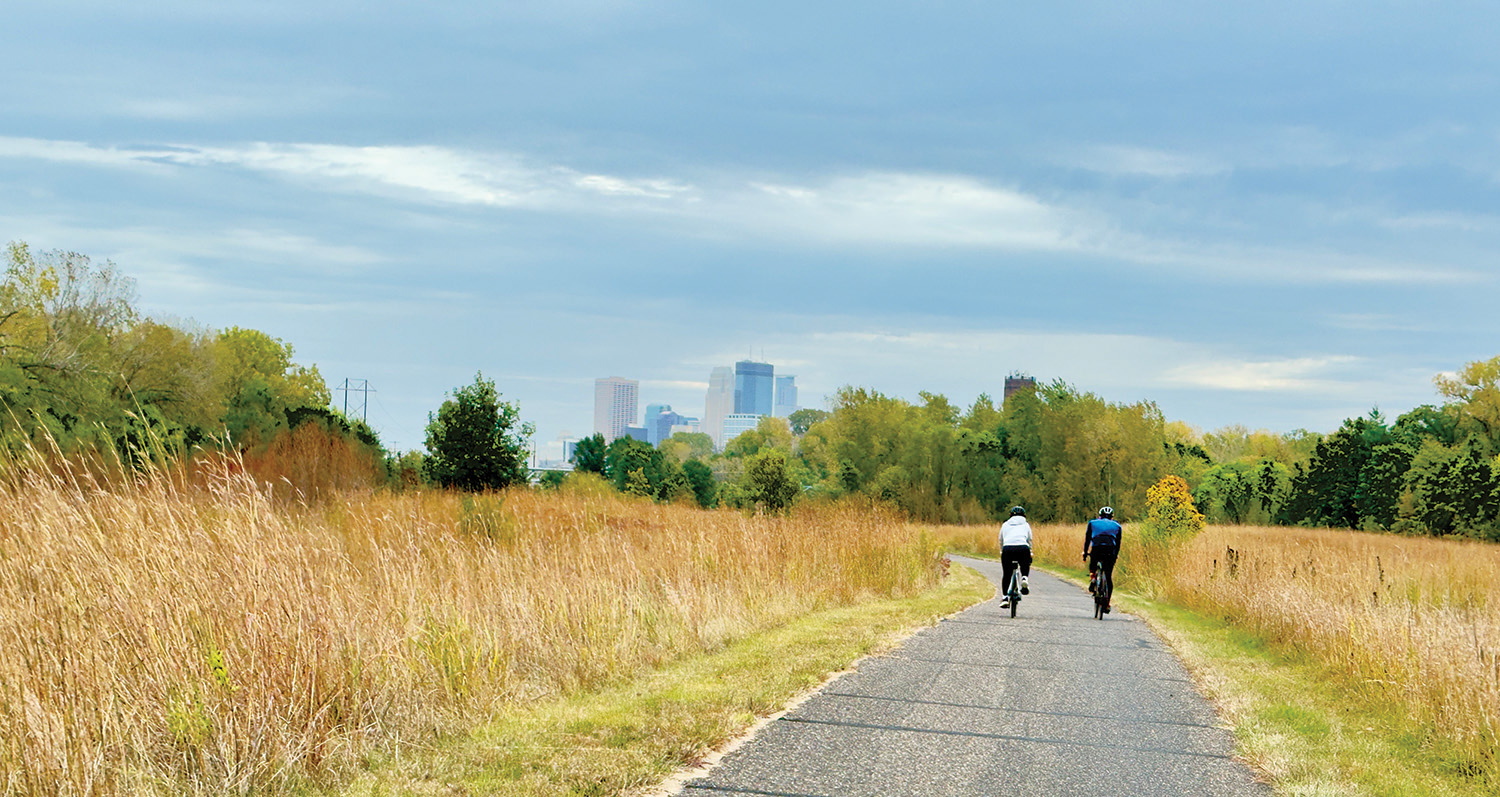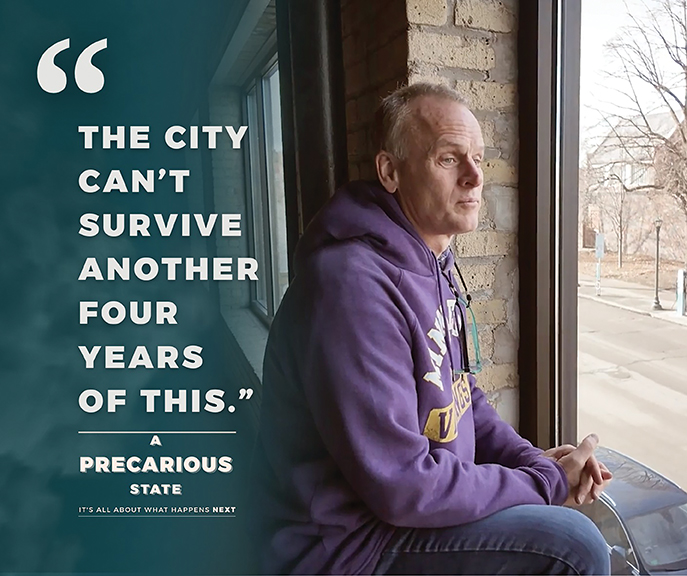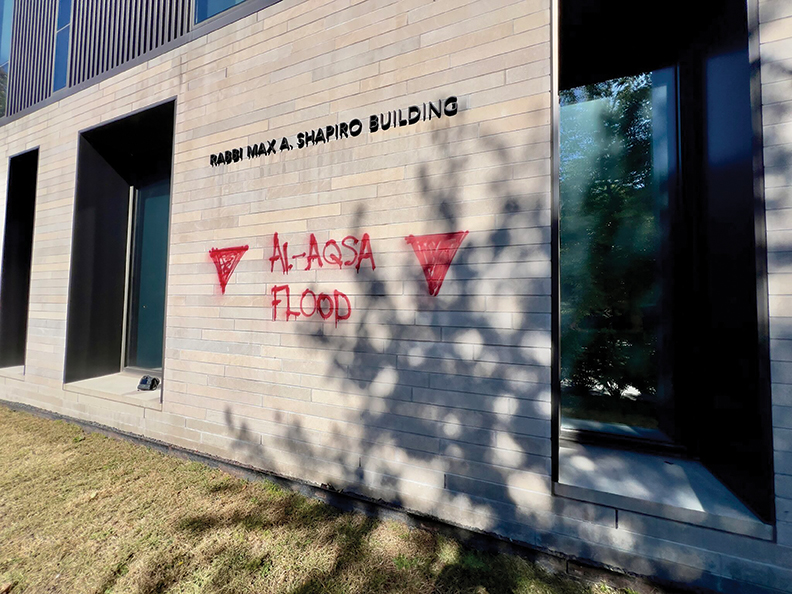Since the start of the pandemic, we’ve all ended up developing skills we never wanted to acquire in the first place. In my case, this includes learning to cut my own hair (not terrible, but also not an elegant process) and learning how to hand-strip a terrier (don’t ask). It now appears we need to add some basic crime prevention strategies to our list of unwanted but necessary skills as we learn to navigate a challenging public safety environment that does not appear likely to change in the short to mid-term future.
Why is our neighborhood less safe than it used to be?
My answer is that I’m not sure it matters, at least for purposes of figuring out how to respond. Entire books have been and will be written on the subject. Most will point to the disruption of the pandemic, the George Floyd murder, and its aftermath, widening income and wealth gaps, and other factors, but despite the use of statistical analyses, comprehensive reviews, and divining rods, I’ll be shocked if a consensus opinion emerges any time soon.
What we do know is that violent crime is on the rise, while the number of active police officers has dropped off a cliff. The numbers are probably familiar. At the start of the pandemic Minneapolis had over 900 sworn officers. At its low point, that number dropped to approximately 550, not all of whom were fit to serve. The Park Police, while a much smaller department, is also at its lowest staffing level in decades. Its 33 sworn officers happens to be the same number it had roughly a century ago when the city was also much smaller.
While the number of Minneapolis officers is slowly creeping upwards– it’s finally cracked 600–we are still well short of the 731 required by the city charter, let alone the more than 900 we had pre-pandemic. On any given night, the MPD can field 12-14 officers for the entirety of downtown and Cedar-Riverside. Pre-pandemic, that number was roughly 60–a 400% decrease in coverage.
So, hire more officers, you say! This is, by far, the number one suggestion I received in my inbox last month. Not so easy, it turns out. We don’t just have a shortage of officers locally, we have a severe shortage statewide and nationally. From St. Cloud to Duluth to Osseo to Albert Lea, police departments are experiencing critical staffing shortages. In July of this year, the City of Morris reluctantly disbanded its more than 140-year-old police department because of officer recruiting and retention problems. There just aren’t enough cops anymore, and there’s not a flood of new recruits waiting to get in.
My personal experience working with law enforcement
Back in the early 2000s, I worked in the Public Safety Division of the Minnesota Attorney General’s Office. I was involved with trials all over the state and worked with law enforcement officers day in and day out. As a general rule, for every hour spent in trial, there’s an hour spent waiting for trial to start, so I spent a lot of time in the hallways talking to cops. At that time, one of the principal officer complaints was how difficult it was for young people to break into law enforcement (so to speak). I talked to many officers who had siblings, children, cousins, friends who had done the hard work it takes to become a licensed peace officer, but simply couldn’t get a job. Law enforcement was a respected profession; staffing levels were high, turnover was low, and the few jobs available went to the best of the best or the lucky.
In my experience, the respect shown towards law enforcement in Minnesota was deserved. Initially, this surprised me. I grew up in a state with notably lower peace officer standards and training and learned quickly as a teenager to avoid contact with law enforcement whenever possible. But, after working directly with Minnesota officers and watching literally hundreds of hours of squad video, my views underwent a 180-degree shift. Law enforcement is a difficult and dangerous job. Most people having contact with law enforcement aren’t at their personal best, and when alcohol and drugs are involved, the level of bad behavior rises exponentially.
What I saw in response were officers who were firm but calm, generally polite, brave in the face of violence, and far more patient than I could ever be with the childish behaviors they routinely had to deal with in the booking areas. It’s not a job you do for the money; it’s a public service.
This is not to put law enforcement on a pedestal. Like all of us, even the most experienced officers make mistakes from time to time. New recruits forget their training. Bad officers do exist, as we saw quite painfully with Derek Chauvin. And every once in a while, at the AG’s Office, we’d watch a clip of squad video, shake our heads, and say, “they must have been following the Articles of Confederation that day, because it sure wasn’t the Constitution…” Those cases got dropped.
My views became more nuanced after I left government service, hung out my shingle, and started taking a modest number of criminal defense cases. No one ever needed to convince me that driving while Black was somehow a citable offense, but you feel it more acutely when you see it firsthand, and it involves someone you know and it ruins young lives before they’ve barely gotten started. Likewise, my friends in the criminal defense bar (and they were friends) would routinely complain about squad video or audio being magically unavailable in certain cases. While I never gave this much credit as a government lawyer, I got depressingly good at predicting when I’d be told “there’s no tape” in my private defense cases. Still, in the vast majority of cases the evidence showed officers doing their jobs professionally and effectively, and my clients tended to plead guilty because they were guilty.
All this is to say that law enforcement is an incredibly complex, challenging line of work. It’s not white hats and black hats, saints, and sinners. There’s a constant friction between the hope and expectation of rising to the highest standards of conduct every single day and tamping down the darker impulses, weaknesses, and imperfections we all have in some measure. We necessarily hold officers to a higher standard of conduct but, paradoxically, it’s practically unattainable. Good officers, like good parents, know they fall short every day but keep on trying.
We need the best of the best–now more than ever–but there’s a critical shortage of officer candidates. The flood of new candidates that existed fifteen years ago has slowed to a trickle, and not everyone who wants to be a peace officer is a good fit for the job.
So, what is to be done?
Wholly apart from new approaches to policing, we simply need more officers to respond to the rise in violent crime. This won’t happen easily or quickly. In the aftermath of the George Floyd murder, the flag of law enforcement is very much in the mud, and it will take years to get the stains rinsed out. Recruitment is a challenge, and since it’s a statewide challenge, it needs a statewide response. Right now, cities and counties are fighting with each other for a small pool of available officers. Competing recruitment and retention bonuses are becoming the norm, and Minneapolis has an extra challenge simply because it was the epicenter of the George Floyd disaster.
To some extent, this is a problem we can and should throw money at. While the best law enforcement officers aren’t motivated primarily by money, promising young people are not going to enter the profession in sufficient numbers if they will be crippled by student loan debt and other obligations. They need to know they can appropriately provide for themselves and their families and be fairly compensated for the risks and abuse that wearing a badge currently invites.
In the Legislature, both parties seem to recognize this, yet collectively they have accomplished nothing. In the last legislative session, Republicans in the Senate proposed $65 million for officer recruitment and retention. Democrats countered with numbers ranging from $6 million to $16 million, with larger amounts spread out for crime prevention, intervention, and alternative policing measures. Republicans responded with additional proposals of their own. In the end, the entire public safety bill failed, and the Legislature appropriated precisely zero new dollars for recruitment and retention.
In case it’s not perfectly obvious, with both the Park Board master planning process, and now with public safety, I have resolutely tried to avoid slipping into our worsening partisan morass. In both instances the neighborhood groups we’ve managed to assemble have been much more bipartisan than many might guess. I like that. I think it’s good for the neighborhood, and I also think it’s good for us on a larger scale given how divided and angry we’ve become on a national level.
That being said, when it comes to a failure as colossal as the collapse of the public safety bill, I suspect there’s room for finger pointing in all directions. If you care about this issue, please let our state political leaders know. This is a politically connected neighborhood on both sides of the aisle, and I firmly believe that public input makes a difference. If you have time, please reach out to whomever you know in state government and let them know this needs to be a consensus priority in the coming session.
Given that we’re sitting on top of an historic budget surplus in excess of $9 billion, this is hardly an instance in which tough choices need to be made between competing priorities. As between recruitment and retention and other law enforcement needs, we can do it all if we want to. It’s in the State’s interest. If you can’t provide basic public safety, you don’t have much of a community. Personally, I’m in favor of whatever actually works, or whatever experienced law enforcement professionals think has a reasonable shot at working. While I believe that crime prevention and intervention are absolutely essential, effective officer recruitment and retention is also a mainstay of any functioning law enforcement system.
No matter what happens in St. Paul, however, it’s going to be years before we’re back to the staffing levels we actually need. In the meantime, our officers will have to learn to do more with less. Which brings me back to the need for us to learn unwanted skills, in this case having to do with crime prevention, the single most important thing we can do to help law enforcement in this challenging time.
We can actively prevent crime from occurring in the first place.
The easiest crimes for law enforcement to respond to are the ones that don’t happen. Effective crime prevention frees up limited law enforcement resources to be used where they’re most needed, and many of the crimes we’re seeing now have an element of opportunism to them. We can do something about that:
- Lock your house, lock your car.
- Don’t keep valuables in your car if you can avoid it, conceal them if you can’t.
- Keep your car in the garage if you have one.
- Don’t wear headphones when you’re out, don’t be staring at your cell phone when you’re walking.
- Try to avoid sitting in your car once you’ve reached your destination.
- Keep a porch light on at night; if you don’t have one, consider having one installed. It also turns out and this was surprising to me those doorbell cameras are quite helpful to law enforcement as well. They often record what actually happened, entry and exit routes, and other useful information, so please consider getting one if your circumstances permit.
- Above all, please don’t hesitate to call 911. Even in this time when we’ve so painfully witnessed the reality of police misconduct, it’s important to recognize that this is the exception, not the norm. 911 typically receives over 1,000 calls for service on any given day. By contrast, in the entirety of last year the City received 380 complaints of misconduct, 43 of which were assessed to be duplicates, and 86 of which were outside the City’s jurisdiction. 911 is here to help, and even if the police department lacks the resources to respond to a given call, it still provides an important data point. Police resources are prioritized where the needs are most acute, and that’s impossible to accurately assess if there isn’t an underlying report.
We still live in a relatively safe city.
Finally, it’s critical to maintain perspective. While crime is in disputably on the rise, Kenwood and CIDNA are still much safer than most neighborhoods in the city. Between January 2021 and July 2022, Kenwood recorded one completed carjacking, while CIDNA had zero. The situation is more challenging in Lowry Hill and East Isles, where there were 19 and 26, respectively, during that same time period. It’s a similar story with robbery, where Kenwood had two completed offenses during this same 19-month window, and CIDNA had four. Lowry Hill had 44, and East Isles had 60. And with motor vehicle thefts and other offenses there are stark differences among neighborhoods, and law enforcement needs to be able to deploy its limited resources where they’re most needed. For the rest of us, we need to get good at helping ourselves, and we need to get good at communicating with the law enforcement we do have, because the cavalry’s not coming any time soon. And please, please be nice to the officers we have remaining. It’s a difficult, necessary job, and we shouldn’t want them to leave.
Marty Carlson lives in Kenwood.





